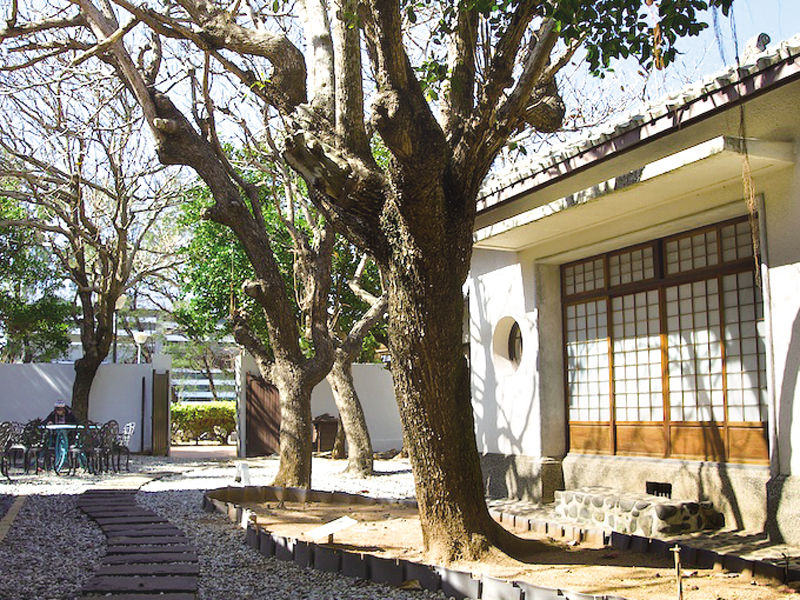Confucius Temple (Veined Stone Academy) & Kwuesing Building
Attractions
Founded in the 31st year of the Qianlong era (1766), Veined Stone Academy was established with donations from local scholars such as Hsu Yingyuan, Chang Mienmei, and Tsai Lienhui, under the direction of magistrate Hu Jianwei. The name "Veined Stone" is a Penghu specialty and comes from Penghu's unique multicolored stones, symbolizing literary excellence.
As a major educational institution, Veined Stone Academy employed renowned scholars for lectures and was home to Penghu's only successful Jinshi (imperial exam scholar), Cai Ting-Nan.
During early Japanese rule, it was repurposed as a field hospital before being restored as a Confucius Temple. During the early period of Japanese occupation of Penghu, it was used as a field hospital and later renovated into a Confucius Temple. Despite the changes, scholars and local gentry were still appointed as administrators. During the end of World War II, when American forces bombed Penghu, the then-administrator, scholar Wu Erhtsung, chose to remain at the Confucius Temple rather than flee with most of the villagers to the countryside. He sought refuge only in a nearby air-raid shelter. While in hiding, he gave the shelter poetic names such as "Refuge Cave" and "Tranquil Nest." He also composed poems expressing his thoughts, revealing his deep affection for the temple and his calm and philosophical outlook on life:
At seventy-three, I have lived long enough, what does life and death matter now?
If a bomb should strike and take my life, I will join the crowd in building a shelter from the earth.
Born with no purpose to the world, I have merely passed through this life.
I watch the wise seek enlightenment, but the fool like me is still trapped in the clay.
Also:
High in the eastern mountains, I lie at ease; In an empty valley, no sound disturbs; I am not troubled by the chaos below and I spend my days in solitary reflection.
The birds of spring sing, their song familiar as if we had known each other, accompanying my quiet thoughts.
A world unto itself, where I am free; Flying clouds, forgetting the world, and escaping the busy life.
Veined Stone Academy was founded with the establishment of Kwuesing Building. Later, in the 9th year of the Daoguang era (1829), Kwuesing Building was rebuilt in the southeast direction (the Xun direction). When the Confucius Temple was renovated in 1963, Kwuesing Building was the only structure preserved in its original form, making it the only surviving Kwuesing Building in Taiwan. The building has a square layout, with an arched opening at each of the four corners of the porch. As part of the academy, the design is simple, with modest decoration. The building is generally in good condition, and due to its original preservation, Kwuesing Building has been designated as a historic building.
Source: "The History and Spirit of Veined Stone Academy(澎湖文石書院的始末及其基本精神)," National Cultural Heritage Database(國家文化資產網), National Museum of History.
As a major educational institution, Veined Stone Academy employed renowned scholars for lectures and was home to Penghu's only successful Jinshi (imperial exam scholar), Cai Ting-Nan.
During early Japanese rule, it was repurposed as a field hospital before being restored as a Confucius Temple. During the early period of Japanese occupation of Penghu, it was used as a field hospital and later renovated into a Confucius Temple. Despite the changes, scholars and local gentry were still appointed as administrators. During the end of World War II, when American forces bombed Penghu, the then-administrator, scholar Wu Erhtsung, chose to remain at the Confucius Temple rather than flee with most of the villagers to the countryside. He sought refuge only in a nearby air-raid shelter. While in hiding, he gave the shelter poetic names such as "Refuge Cave" and "Tranquil Nest." He also composed poems expressing his thoughts, revealing his deep affection for the temple and his calm and philosophical outlook on life:
At seventy-three, I have lived long enough, what does life and death matter now?
If a bomb should strike and take my life, I will join the crowd in building a shelter from the earth.
Born with no purpose to the world, I have merely passed through this life.
I watch the wise seek enlightenment, but the fool like me is still trapped in the clay.
Also:
High in the eastern mountains, I lie at ease; In an empty valley, no sound disturbs; I am not troubled by the chaos below and I spend my days in solitary reflection.
The birds of spring sing, their song familiar as if we had known each other, accompanying my quiet thoughts.
A world unto itself, where I am free; Flying clouds, forgetting the world, and escaping the busy life.
Veined Stone Academy was founded with the establishment of Kwuesing Building. Later, in the 9th year of the Daoguang era (1829), Kwuesing Building was rebuilt in the southeast direction (the Xun direction). When the Confucius Temple was renovated in 1963, Kwuesing Building was the only structure preserved in its original form, making it the only surviving Kwuesing Building in Taiwan. The building has a square layout, with an arched opening at each of the four corners of the porch. As part of the academy, the design is simple, with modest decoration. The building is generally in good condition, and due to its original preservation, Kwuesing Building has been designated as a historic building.
Source: "The History and Spirit of Veined Stone Academy(澎湖文石書院的始末及其基本精神)," National Cultural Heritage Database(國家文化資產網), National Museum of History.
Visitor Information:Free Admission
- Phone
- 06-9261141
- Opening Hours
- 09:00~16:00 (Closed on Mondays and Tuesdays)
- Theme Category
- Attractions Cultural Attractions Historical Attractions
Nearby Locations
TOURIST ATTRACTION












